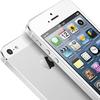When an iPhone is turned off, most wireless chips stay on. For instance, upon user-initiated shutdown, the iPhone remains locatable via the Find My network. If the battery runs low, the iPhone shuts down automatically and enters a power reserve mode. Yet, users can still access credit cards, student passes, and other items in their Wallet. We analyze how Apple implements these standalone wireless features, working while iOS is not running, and determine their security boundaries. On recent iPhones, Bluetooth, Near Field Communication (NFC), and Ultra-wideband (UWB) keep running after power off, and all three wireless chips have direct access to the secure element. As a practical example what this means to security, we demonstrate the possibility to load malware onto a Bluetooth chip that is executed while the iPhone is off.
翻译:当 iPhone 被关闭时, 大部分无线芯片会继续运行。 例如, 用户启动关闭时, iPhone 仍然可以通过“ 发现我” 网络继续运行。 如果电池过低, iPhone 将自动关闭并进入电源储备模式。 然而, 用户仍然可以访问信用卡、 学生通行证和钱包中的其他物品。 我们分析苹果如何在iOS 不运行时操作这些独立无线功能, 并确定其安全界限 。 在最近的iPhone、 Bluetoth、 Near Field Communication (NFC) 和 Ultra- band (UWB) 上, 电源关闭后仍可以运行, 所有三个无线芯片都可以直接进入安全元素 。 作为实例, 这对安全意味着什么。 我们展示了将恶意软件装入在 iPhone 关闭时执行的蓝牙芯片的可能性 。




